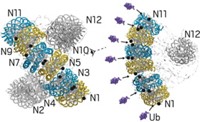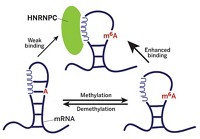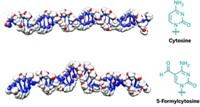Advertisement
Grab your lab coat. Let's get started
Welcome!
Welcome!
Create an account below to get 6 C&EN articles per month, receive newsletters and more - all free.
It seems this is your first time logging in online. Please enter the following information to continue.
As an ACS member you automatically get access to this site. All we need is few more details to create your reading experience.
Not you? Sign in with a different account.
Not you? Sign in with a different account.
ERROR 1
ERROR 1
ERROR 2
ERROR 2
ERROR 2
ERROR 2
ERROR 2
Password and Confirm password must match.
If you have an ACS member number, please enter it here so we can link this account to your membership. (optional)
ERROR 2
ACS values your privacy. By submitting your information, you are gaining access to C&EN and subscribing to our weekly newsletter. We use the information you provide to make your reading experience better, and we will never sell your data to third party members.
Biological Chemistry
DNA Shape Directs Proteins
Sensing the shape of DNA’s minor grove, not simply following DNA’s sequence, helps DNA-binding proteins find their proper place
by Amanda T. Yarnell
November 2, 2009
| A version of this story appeared in
Volume 87, Issue 44
The shape of DNA, not simply its sequence, helps DNA-binding proteins find their proper place. That’s the conclusion a Columbia University team reached after sifting through high-resolution structures of more than 1,000 protein-DNA complexes (Nature 2009, 461, 1248). Barry Honig, Richard S. Mann, and coworkers found that many such proteins dip a positively charged arginine “finger” into DNA’s minor groove to detect local variations in DNA shape and electrostatic potential. Short tracts of as few as three adenine or thymine nucleotides are sufficient to narrow the minor groove and thus boost the local electrostatic potential, they note. Unlike DNA’s major groove, the minor groove offers proteins few, if any, opportunities to make sequence-specific hydrogen bonds with DNA bases. That has left the minor groove largely in the shadows when scientists consider how proteins recognize specific DNA binding sites. But sensing the shape of the minor groove by way of its electrostatic potential “might help a protein find its binding site in the midst of all the other DNA sequences in a genome, without directly sampling every possible major-groove hydrogen bond,” comments Tom Tullius, who studies DNA recognition at Boston University.





Join the conversation
Contact the reporter
Submit a Letter to the Editor for publication
Engage with us on Twitter